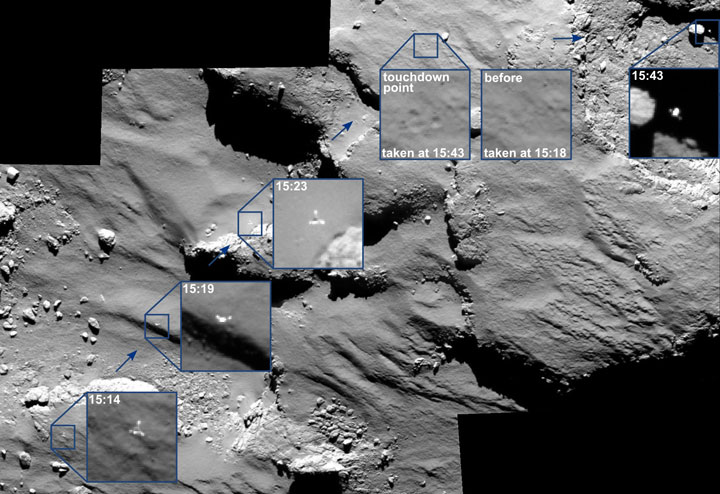TORONTO – Philae may be sound asleep, but it has made an exciting discovery: the building blocks of life.

The probe — part of the larger Rosetta mission to study comets — landed on Comet 67P/Churyumov-Geramisenko on Nov. 12. But it was put to sleep after it landed partly in shade, leaving it unable to fully charge its solar panels.
READ MORE: Space exploration-Why do we invest in missions to asteroids and comets?
But before it was put into hiberation, its 10 instruments were put to work. One result was that the lander “sniffed” organic molecules on the comet’s surface.
This is an exciting find for scientists as organic molecules are necessary for life.
The significant discovery could help scientists better understand how life started on Earth. A leading theory is that comets or asteroids slammed into Earth after it formed, bringing the necessary ingredients of life, including water and organics.
“The data collected by Philae and Rosetta is set to make this mission a game-changer in cometary science,” said Matt Taylor, ESA’s Rosetta project scientist.
Though the mission has had its problems, scientists are still calling it a success: Philae was the first craft to ever land on a comet and Rosetta will continue to conduct scientific analysis as it joins the comet in its journey around the sun.

“It has been a huge success, the whole team is delighted,” said Stephan Ulamec, lander manager at the DLR German Aerospace Agency, who monitored Philae’s progress from ESA’s Space Operations Centre in Darmstadt, Germany, this week.
The lander was also able to drill into the comet, but not as deep as was hoped.
“Although the power of the hammer was gradually increased, we were not able to go deep into the surface,” explains Tilman Spohn from the DLR Institute of Planetary Research, who is leading the research team.
READ MORE: 5 cool things about the Rosetta mission
Other data was collected such as images and radio waves. There was even Rosetta’s “song.”
The team still hopes to reawaken Philae as it nears the sun, perhaps in spring 2015.
“We still hope that at a later stage of the mission, perhaps when we are nearer to the Sun, that we might have enough solar illumination to wake up the lander and re-establish communication,” added Stephan.
Scientists will continue to analyze the data.


Comments